The Hoka One One Trainer is suitable for running and walking on hard surfaces.

- Running shoes: what to look out for when choosing
- Determine your foot type
- Determination of pronation
- Injuries caused by the wrong choice of running shoes
- foot injuries
- knee injuries
- Can I walk with flat feet?
- The best running shoes for hyperpronation
- Asics Gel Kayano 29
- Mizuno Wave Inspire 18
- Saucony Omni Iso 2
- Brooks Adrenaline GTS 20
- pronation exercises
- 1. Stretching the feet
- 2 – turns in a circle
- 3. tiptoe
- 4. heel walk
- 5. Lift your toes
- Choosing the right trainer
- Features when choosing sports shoes
- The best running shoes for running with hyperpronation
- Asics Gel Kayano 28, GT-2000 10 and GT-1000 11
- Nike Air Zoom Structure 24
- How to determine hyperpronation and hypersupination of the foot
- Insoles and sneakers for flat feet
- Sneakers for flat feet
- Running insoles for hyperpronation
- rotation
- Selection of sneakers and insoles in hypopronation
- running conditions
- The best shoes for running on asphalt
- The best ground running shoes
- foot pronation
- Normal pronation
- Excessive pronation (hyperpronation)
- pronation and supination
- How to choose the right running shoes
- women VS men
- Running shoes always run a little big.
Running shoes: what to look out for when choosing
Choosing running shoes is not an easy task. Shoes are an important piece of equipment for runners because not only their comfort but also their health depends on them. Choosing the wrong running shoes can put you at risk of injury. If you're unsure about choosing running shoes, read our running shoes guide to find out what to look for.
Determine your foot type
- Lubricate your feet with a cream or oil.
- Stand on a piece of white paper and mark the widest part of your foot and the heel.
- Assess what the footprint looks like. If the entire footprint is visible on the paper, you have a flat foot. If you can see the arch of the foot, you have a normal foot. If only the front and back of the foot are visible, you have a high foot.
Determination of pronation
When choosing shoes, it is important to pay attention to the angle of the ankle when walking or running, the so-called pronation, which can also affect the safety of the activity performed. The big brands always state the type of pronation in their specs. There are three options.
| type of pronation | characteristics | Recommended shoe |
| Neutral | A deviation of 5-7 degrees from the vertical is the norm. | Shoes for this pronation should support the foot and help distribute the load evenly. |
| hyperpronation | In this case, the angle is 8-15 degrees inward. | Stability is maintained by an insole, orthotics, or an outsole with a corrective function. |
| hypopronation | The hock deviates outwards by 8 to 15 degrees. | The shoe uses a thicker part of the sole on the outside. This helps correct the alignment of the foot when running. The insole should not have supinators or rollers that can expose the foot. The sole of hypopronation trainers must only contain foam or gel. |
Injuries caused by the wrong choice of running shoes
Choosing the wrong running shoes can lead to health problems and injuries. Let's take a look at the most common of these.
foot injuries
Since the foot is the first thing that comes into contact with a surface when running, the shoes on the foot determine how the load is distributed. The foot has curves that the running shoes have to follow. When properly chosen, the ligaments and muscles can evenly distribute the load across the body. That's why the soles of running shoes should be a little thicker, because the heel is where the most stress occurs. Here are the most common foot injuries caused by poor footwear:
- plantar fasciitis.. The plantar fascia, which supports the arch of the foot, becomes overloaded due to the uneven distribution of stress. If this area is subjected to frequent stress, small tears can develop, causing pain and swelling.
- stretching of the ankle. Occurs when the leg is twisted during a movement. The consequence of such an injury is pain, swelling and an increase in local fever. Serious fractures may even require surgery.
- A 'stress' break. It can occur with regular stress on the foot. If the load is not absorbed by the sole and is not evenly distributed, this problem occurs. In this case, every step in the wrong shoes when running hits a spot on the bone, which over time leads to a fracture.
knee injuries
The ligaments have to work hard to keep the knee in the correct position while running. When shoes have poor support and the load is unevenly distributed, the ligaments become inflamed. There are also problems with the kneecap ligament. Over time, knee pain can develop due to improper footwear. When your feet don't cushion the impact like they should, it transfers to your knees. As a result, the articular cartilage can degrade and osteoarthritis can develop. Runners are at greater risk of these problems if they choose the wrong shoes:
Can I walk with flat feet?
Flat feet deform the shape of the foot and significantly reduce its ability to cushion while running. This puts more stress on the ankles and spine and increases the risk of injury. One measure to prevent and treat flat feet is moderate physical activity. This includes light jogging.
According to doctors, flat feet should not be a reason to give up this sport.
This is because running strengthens the muscles and improves blood circulation, which is particularly important when treating this condition. The most important thing is the choice of special running shoes.
The best running shoes for hyperpronation

Improperly fitting running shoes for people with hyperpronation can lead to knee and lower back pain and various running injuries. This can be prevented by special stabilizing running shoes. These models provide excellent support for the foot and absorb the stresses caused by contact with hard ground.
Well-known sports brands offer a range of special stabilization shoes for people with hyperpronation.
Asics Gel Kayano 29

The running shoe from Japan's largest sportswear and shoe manufacturer Asics was developed to support the foot with excessive pronation when training on hard surfaces. A silicone wavy sole in the heel area helps to absorb the impact forces during movement and distribute the load evenly. The midsole is made of different densities to stabilize the foot when running and prevent excessive inward tilting. EVA foam cushioning provides extra cushioning while running.
The lightweight and breathable Jacguard Mesh upper keeps feet warm even in hot weather.
The Asics running shoes are recommended for both beginners and experienced runners.
They offer the foot good support and minimize impact. However, they are a bit heavy for ultra-fast runs and long distances.
Mizuno Wave Inspire 18

This running trainer from the Japanese manufacturer Mizuno features the updated Double Fan Shaped Wave technology. It prevents the inner foot from flattening out. The trainer provides excellent cushioning during movement and can be used by those with hyperpronation. The upper is a breathable mesh material. This makes the shoe very comfortable to wear even on hot days.
Saucony Omni Iso 2
Another running shoe for men with flat feet from the American brand Saucony. This model is interesting in that it employs a supportive, proprietary ISOFit system that stabilizes the foot during movement. The exoskeleton in the heel area immobilizes the foot without restricting its natural movement. Sealed midsole inserts compensate for excessive pronation and ensure a stable and anatomically correct foot position.
The model features Everun spring cushioning, a layer of flexible foam placed just below the insole. The DWRFoam provides additional freedom of movement and does not weigh down the sole. The sole made of abrasion-resistant rubber with an IBR+ profile ensures a secure, non-slip grip.
- Breathable upper with supportive polymer inserts.
- Lightweight and durable Everun upper.
- Signature ISOFit footbed technology.

Brooks Adrenaline GTS 20
Stylish men's hyperpronation trainers from Brooks with a technological support system that prevents the foot from sinking inwards, protecting against ankle and knee injuries. The seamless, breathable upper material offers a slim and comfortable fit, while the 3D Fit Print support elements fix and stabilize the foot well.
Airbags in the midfoot area and DNA Loft technology in the heel area are responsible for cushioning. The flexible rubber sole enables maximum natural movement even during the most strenuous workout. According to reviews, the trainer has an ideal fit, excellent suspension and good support of the foot, which stabilizes it when running.

pronation exercises
There is often an imbalance between pronation and supination, but this can be corrected. Excessive inward tilting of the feet results from weakness in the gluteal muscles, which stabilize the thighs, shins, and ankles. It is therefore advisable to strengthen the legs to correct this problem.
1. Stretching the feet
Sit down, stretch out your legs and place your hands on the floor next to your buttocks. Lift your feet apart, hold them for a moment, and then pull them toward you. Do the same movements with your toes. Perform 15-20 repetitions and repeat the exercise for 2 sets.
2 – turns in a circle
Sit up, stretch your legs. Bring your feet together, then twist to one side and vice versa. Move slowly and maintain maximum amplitude. Perform 10-15 twists in one direction, then 10-15 in the other direction, repeat for two sets. 3.
3. tiptoe
Stand upright with your hands on your waist and your feet shoulder-width apart. Stand on tiptoe and walk until you feel tired. You can take about 15-20 steps on tiptoe, repeat for 2 sets.
4. heel walk
Stand up straight, hands on waist and feet shoulder-width apart. Stand on your heels and walk until you feel tired. You can take about 15-20 steps on your toes, repeat for 2 sets.
5. Lift your toes
Assume a classic stance and place your feet close together. Lift your heels off the floor, stand on your toes, hold them for a second, and return to the starting position. Perform 15-20 repetitions and repeat the exercise for 2 sets.
In addition to strengthening your feet, strengthen your glutes, quadriceps, biceps, hamstrings, and calves. Pronation and supination gradually balance out, but the imbalance is not always eliminated. For this reason, it is also recommended to choose the right footwear for the type of pronation.
Familiarize yourself with the selection of exercises:
Choosing the right trainer
Professional runners choose their gear, including shoes, with care. Amateurs should do the same to protect their feet and ankles from injury. Pronation should be considered when choosing a running shoe to distribute the load from the toes to the heel.
Why should you consider pronation when choosing running shoes? Running puts an enormous strain on the musculoskeletal system. If the foot is not properly aligned, the pressure increases many times over. Shoe choice can improve redistribution, thereby reducing the risk of injury. Manufacturers today produce sneakers for athletes that take into account all types of pronation. Your feet get optimal support, cushioning and the necessary rigidity.
Features when choosing sports shoes
When choosing sneakers, the first thing to consider is pronation, i.e. the anatomical structure of the foot. This aligns the angle to the central axis and improves motion control, cushioning and stability on push-off and landing. Instep height, heel type and sole thickness are taken into account.
- For people with hyperpronation. Insole in the midsole and sometimes down to the heel area. Additional cushioning. Special projection on the inside, or longitudinal vault. Provides stability, support for the foot and protection from tipping over.
- For people with hypopronation. Strong cushioning in the midsole area to absorb impact loads. flexibility of the shoe. Cushioning in the heel and outsole area.
- For people with neutral pronation. Compatibility with the foot. Many models fit here, it is better to choose models with cushioning for people with neutral pronation.
Choosing the right shoe helps stabilize pronation. The result is cushioning that restores natural movement, comfort, and protection. It is advisable to buy the shoes only after trying them on to be sure that they fit perfectly and taking into account the structure of the foot.

The best running shoes for running with hyperpronation
We have selected the best models for assisted running. They are all similar but have their own characteristics.
Your best running and cross-country skiing gear in our trening365 shop on Avito. Only original products, advice on choosing, free delivery in Russia.
Asics Gel Kayano 28, GT-2000 10 and GT-1000 11
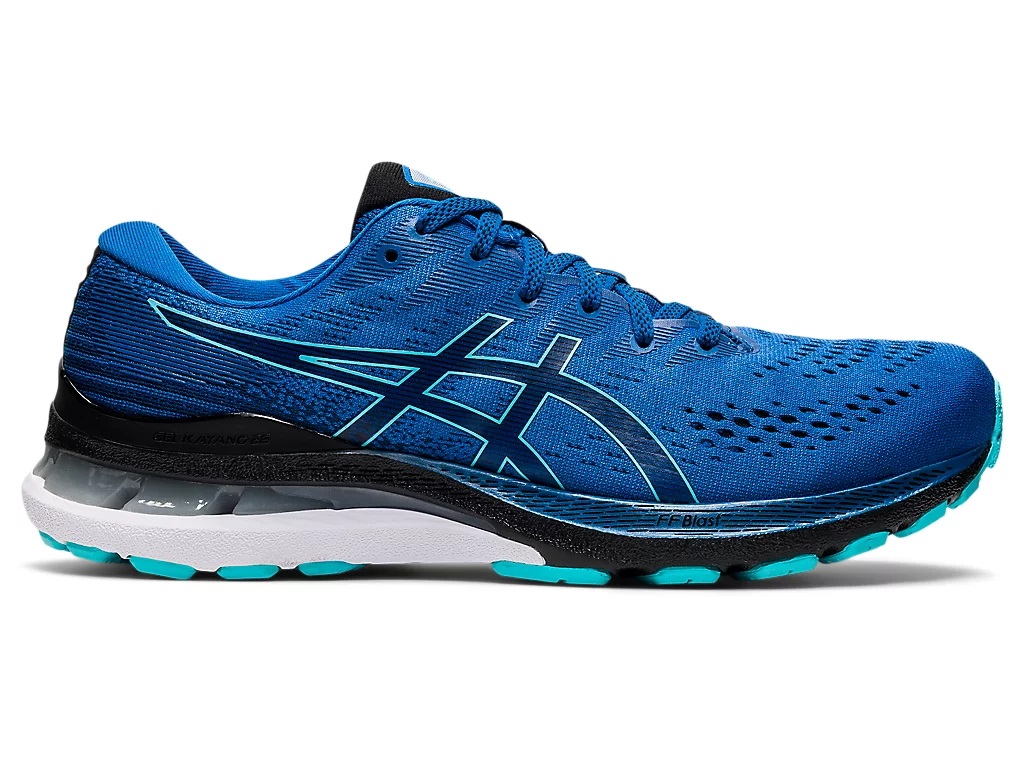
The Asics Gel-Kayano 28 is a solid, balanced model with good support and cushioning. Stabilizing element in the midsole, stable heel cage. New FF Blast foam is even softer and springier than the 27 model. Much more comfortable on landing and impact.
| Why | For whom. |
| Daily training at different speeds, preparation for marathons and half marathons, participation in competitions from 10 km on the track. | For runners of all fitness levels, with excessive or neutral pronation. Suitable for heavier people, beginners and experienced runners. |
Asics GT-2000 10 and GT-1000 11 – Junior versions of the Kayano 28 with the same purpose. The GT 2000 is very similar to the Kayano, but the cushioning is from the older FlyteFoam and the upper has a simpler finish. The GT 1000 is a budget model with assistance. It is slightly lighter and has a coarser cushioning.
With the update of both models, the stabilizing inserts are less pronounced, the 'settings' of the models have been shifted towards neutral, so that there is no longer a Duomax insert, now the Litetruss is used.
Nike Air Zoom Structure 24
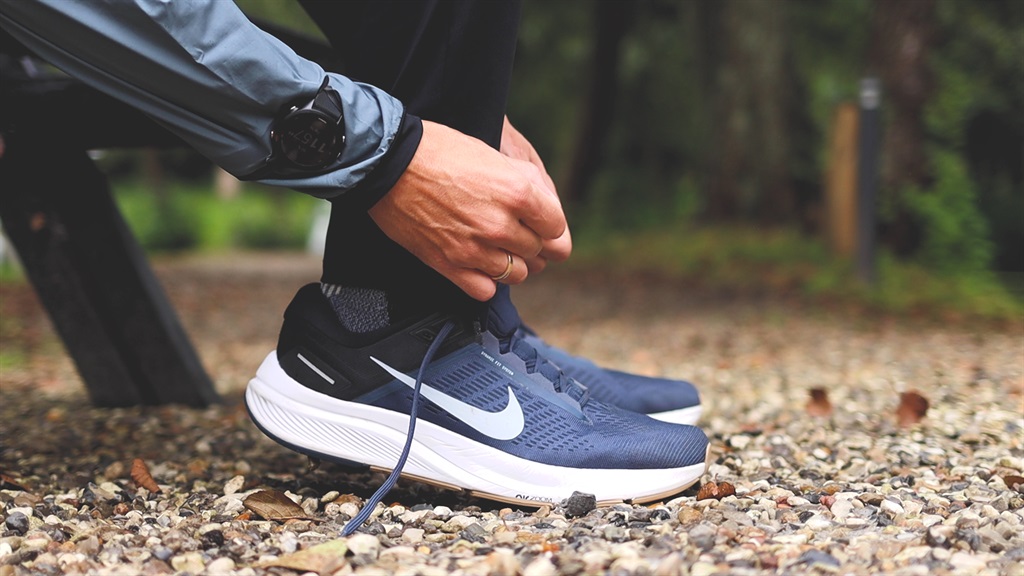
How to determine hyperpronation and hypersupination of the foot
- Static. Measures pronation in a stationary position and does not reflect the actual function of the foot when running.
- Dynamic. A more accurate method. The arch of the foot is tested on a special scanner-like device in three positions: standing on two feet, standing on one foot and squatting. The test is then performed on a treadmill, video is recorded and played in slow motion.
The dynamic test is carried out in specialized running shops. Unfortunately, there aren't many of them in Russia - only a few in Moscow and St. Petersburg. If you do not have the opportunity to take such a test, go to an orthopedic center. There you will be examined with a scanner, but without a treadmill. After the examination, you will probably be offered to buy or order orthotics. But don't rush to buy them right away.
The static test can be performed at home - it is a simple 'wet test'. You need to stand on the floor with your wet foot and examine the imprint:
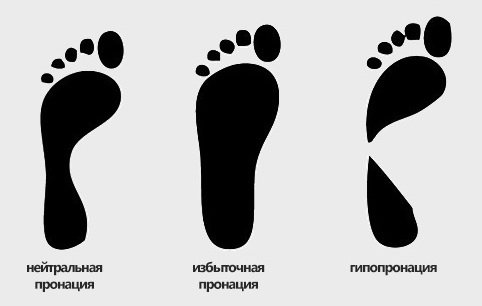
Insoles and sneakers for flat feet
Wrong foot position can lead to pain in the knees and back, in the periosteum and Achilles tendon. Buying the right insoles and orthotics only solves half the problem, the other half is foot strengthening exercises.
Orthotics and sneakers for hyperpronation are just crutches. They don't heal, but they help prevent pain when walking and running and prevent more serious injuries. In sneakers with support or insoles, the foot is not loaded and does not receive cushioning capacity. So go for a light jog in support-free running shoes a few times a week and do it Foot strengthening exercises.
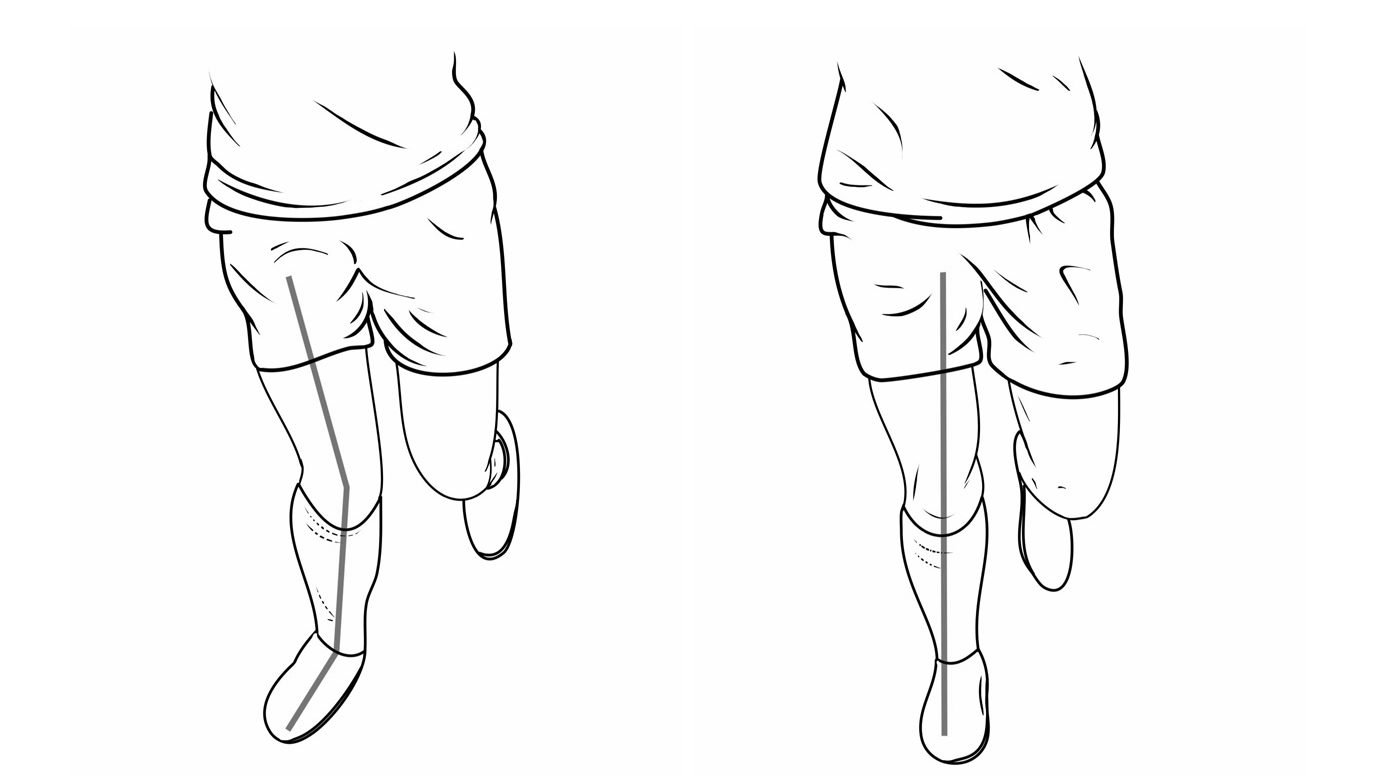
Sneakers for flat feet
Sneakers for hyperpronators have a special hard insole in the arch area. This prevents the foot from slipping and keeps the ankle in the correct position. Some manufacturers do without a hard insole in their shoes and instead use a special sole shape that is thicker in the area of the arch of the foot.
Important elements of sneakers for flat feet:
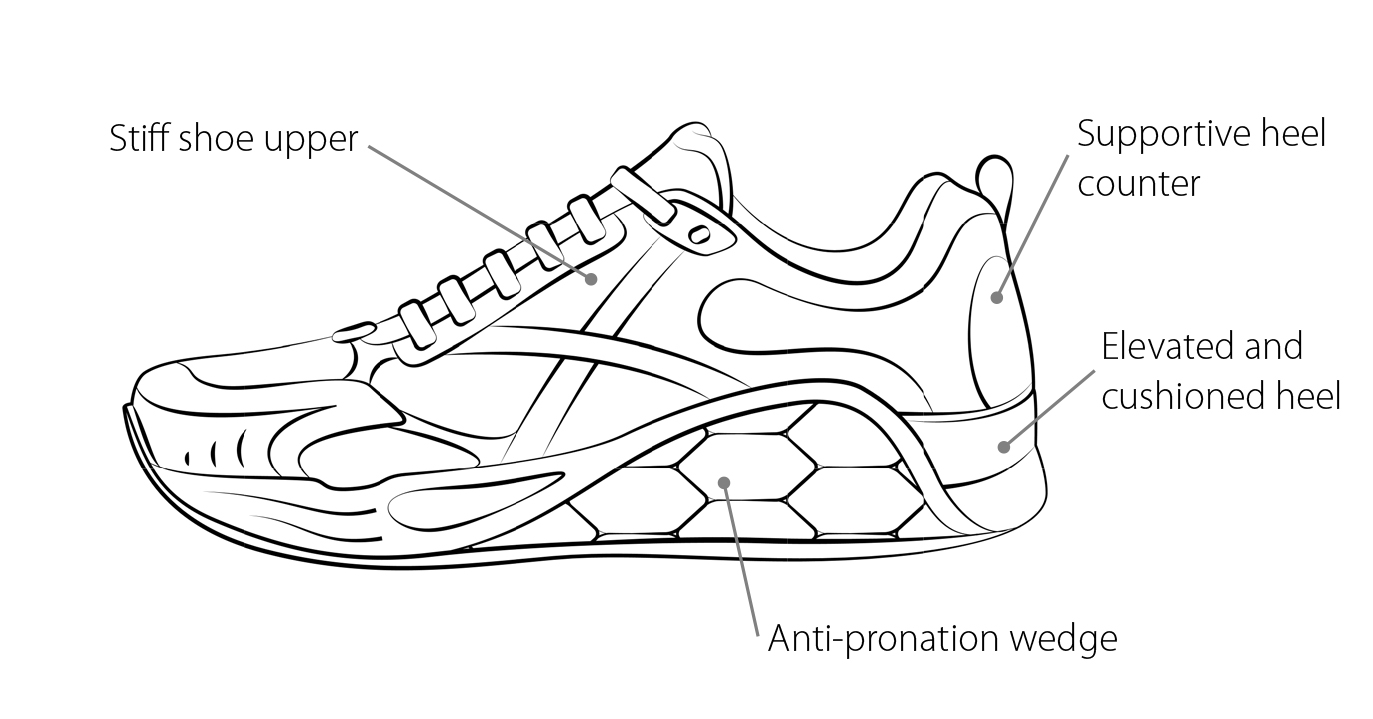
Here is a comparison of foot alignment in regular soft running shoes and in hyperpronating shoes:
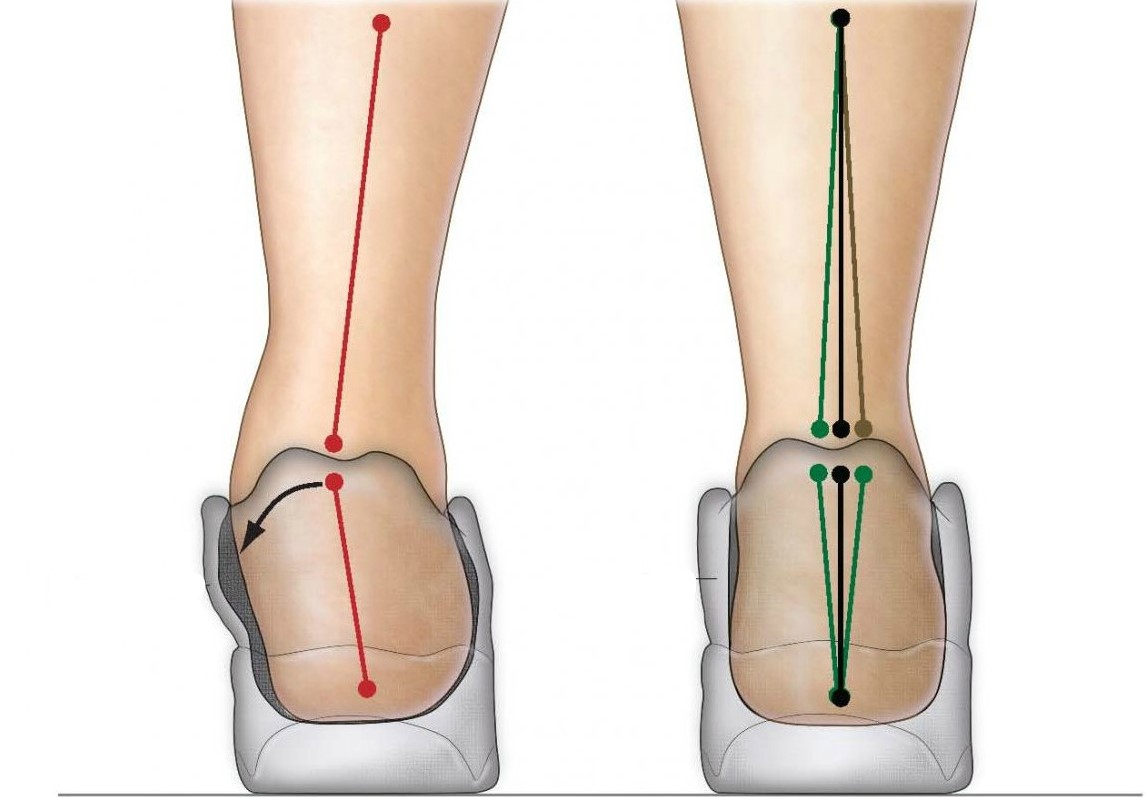
Running insoles for hyperpronation
Strong hyperpronation can be supported by the use of insoles. You can choose between ready-made variants or have them made individually. Don't forget to tell your doctor that you plan to use them for running. Orthoses can only be inserted into any shoe in place of the original insole. They must not be stacked on top of each other.
rotation
Rotation is another type of movement; it means 'turning'. It is specific not only to the limbs of the human body but also to certain components such as the spine. Pronation and supination can be considered partial rotation. The range of motion of the upper and lower limbs is very different, which should be taken into account. Each rotation serves to stabilize a part of the body during the movement.
The rotator muscles (pronators and supinators) are small and don't deserve attention in general muscle building. But the athletes need to talk about them, the coach needs to teach the beginners the importance of antagonists in building body composition.
Selection of sneakers and insoles in hypopronation
Hypopronation trainers help maintain the normal physiological condition of the foot. To minimize the effects of the deformity, orthopedists recommend the following rules:
- Women should not wear heels higher than 4 cm.
- Children under the age of 14 should not wear shoes with a high platform.
- Shoes should be selected according to the size of the foot. Tight models lead to defects in the supporting part of the foot.
- Sports shoes should be supplemented with special insoles that help strengthen muscles and ligaments. In this way, hypopronation can be corrected. The symptoms of the disorder are alleviated.
- Flat soles are not acceptable. A slight rise in the middle and a moderately stiff bottom are acceptable.
- The material must be breathable.
- Flat shoes and platform soles have no health benefit (prevention of flat feet). High-soled shoes put a lot of strain on your feet. In this case, there is a risk of varicose veins forming.
- Shoes with a stretch in the toe area are suitable for men.
- For the big toe, an orthopedic pronator, a special insole or a supinator is suitable. The products help to avoid foot deformities.
Choose running shoes with special attention if you play sports (running, jogging, walking, etc.). A corrective insole helps to distribute the load evenly over the supporting surface of the foot. This normalizes the biomechanics of the foot and eliminates the feeling of discomfort. Having identified the first symptoms of hypopronation, you should prevent its further development. Participate in physical exercises and special gymnastics exercises, consult an orthopedist.
Today's sports shoe manufacturers (Nike, Adidas, Puma, etc.) offer consumers both high-quality and reliable orthopedic shoes. Special insoles correct the level of the foot and prevent the development of various defects. Don't skimp on your health!
running conditions
If you want to jog on asphalt or tiles, you need Shoes for running on asphalt. However, if your favorite running route is dirt tracks, dirt roads in forest parks, etc., you need good trail running shoes. then you need good trail running shoes..
The best shoes for running on asphalt
The special thing about asphalt running shoes is that they have excellent cushioning properties. The soles of these running shoes are made of special materials sandwiched between layers of base material to cushion impact on landing. Cheap running shoes only have cushioning in the heel area, while more expensive models have cushioning in the heel and toe area.
Each manufacturer has different damping materials. You can identify which material is used in a specific running shoe model by the symbols on the packaging: Gel (special gel), Air (compressed air balloon), Grid (mesh), etc.
The best ground running shoes
Shoes for walking on the ground are called, among others trail shoes. They are characterized by several features:
- Trail running shoes have an outsole with an 'aggressive' profile that provides good grip. This property is extremely useful when running on rough terrain or wet grass.
- The sole of a trail running shoe is more durable but has a lot less cushioning than a tarmac shoe because the ground itself offers a lot more cushioning than tarmac. For this reason, you cannot walk on asphalt with trail shoes.
- The upper of these shoes is thicker and often waterproof.
trail shoes – are a type of terrain trainer. However, you should not walk through bare forests and high grass with trail shoes. They do not protect you from twisting your ankle in an inconspicuous hole. Trekking takes place on specially prepared paths in fields, forests, dirt roads in the forest, etc.
foot pronation
Pronation is a way of keeping your foot flat while running. Foot pronation can be determined by a 'wet test'. Stand on a piece of paper, preferably dark-colored paper, with your feet wet.
After half a minute, step off the paper and look at the imprint. From this you can approximately determine the type of pronation.
Normal pronation
The foot is flat and cushions well when landing. The risk of injury is minimal.
This is what the foot looks like when running with normal pronation

This is what the impression looks like in the wet test

People with normal pronation are better off with sneakers that stability, damping, Support (Different manufacturers classify their sneakers differently depending on the degree of pronation).
Excessive pronation (hyperpronation)
The foot is placed more on the inner part, ie the soft parts. This leads to better cushioning, but also to overuse of the muscles. The result is that the joints work in an unnatural position. This leads to discomfort and, over time, injury. People with hyperpronation need to choose the right running shoes as carefully as possible.
This is what the legs look like when running with overpronation

This is what the wet test print looks like.

People with a high or moderate degree of hyperpronation should wear running shoes. Choose motion control. People with moderate to neutral hyperpronation should wear running shoes Stabilization, control.
pronation and supination
Pronation is the way the load on the feet is distributed during running and ground contact. Pronation is critical to choosing the right cushioning to allow the forefoot to push off evenly as you run. In normal pronation, the foot should touch the ground evenly and have a slight flexion of no more than 15 % on the inside of the foot. When overpronating or hyperpronating (ie, lateral flexion, greater than 15 %), the foot flexes inward, leaving a flat footprint; with supination (or insufficient pronation), the outside of the foot barely touches the ground.
This is easy to check by looking at the condition of your old shoes: overpronation wears down the inside of the sole, supination wears down the outside. You can also do a 'wet test': dip your bare foot in water and immediately place it on a piece of paper. If the footprint is too wide, without a slight curve on the inside, you have hyperpronation, if the outside of the footprint is too thin, you have supination, if neither is the case, you have normal pronation. In some shops, such as the running shop Stride, you can determine this with the help of a so-called gait analysis: During a test run on the treadmill, a camera records exactly how you land while running. A pair of running shoes will then be selected for you based on this data.
How to choose the right running shoes
With excessive pronation, the heel makes first contact with the ground, and you push off with your thumb and second toe. Because the flexion is greater than normal, the foot and ankle are overstressed, severely affecting stability. So you need shoes that increase stability, with a firm, medium-hard midsole and external support that reduces pronation. If you don't pay attention to this, you risk blisters, plantar fasciitis and so-called runner's knee (abbreviated: rubbing of cartilage and kneecap).
For example, the Asics GT-3000 41, a stabilizing running shoe for athletes with hyperpronation, focuses on supporting the foot during the explosive phase. This model has good cushioning for comfortable walking on asphalt and other hard surfaces.
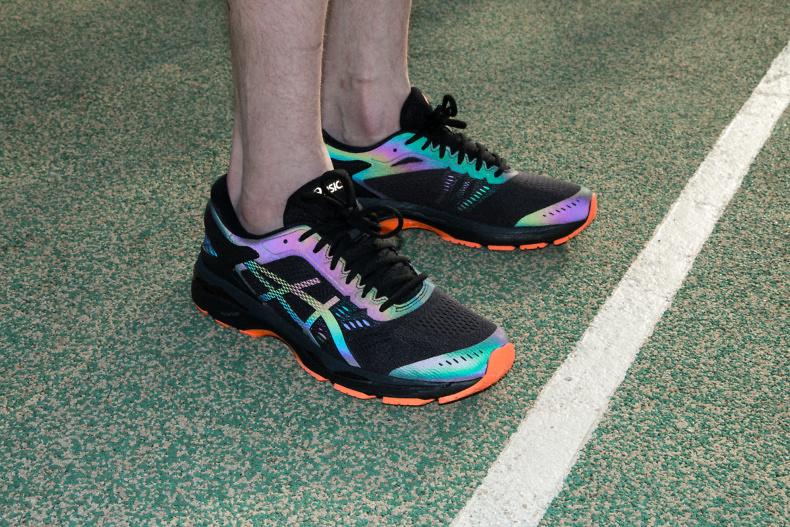
The classic model from Asics, the Kayan, is almost universally applicable and was developed for runners with neutral to hyperpronation; it is suitable for running on hard surfaces (asphalt, hard ground or treadmill). The Asics Gel-Kayano 24, for example, is good for daily training and for runners with heavy pronation and will also be suitable for long distances in the future.
Shoes with anatomically shaped, pressure-distributing soles like the Nike Air Zoom Vomero 12 are ideal for runners with a neutral pronation: they are responsive and offer good cushioning when they come into contact with the ground. The softness and elasticity of the running shoe plays a big role, especially for beginners whose knees are not used to shock therapy in the form of asphalt. Therefore, you should consider the Hoka One-One Bondi 5 - the brand is known for its high and technological sole that protects the runner from hard surfaces as much as possible.
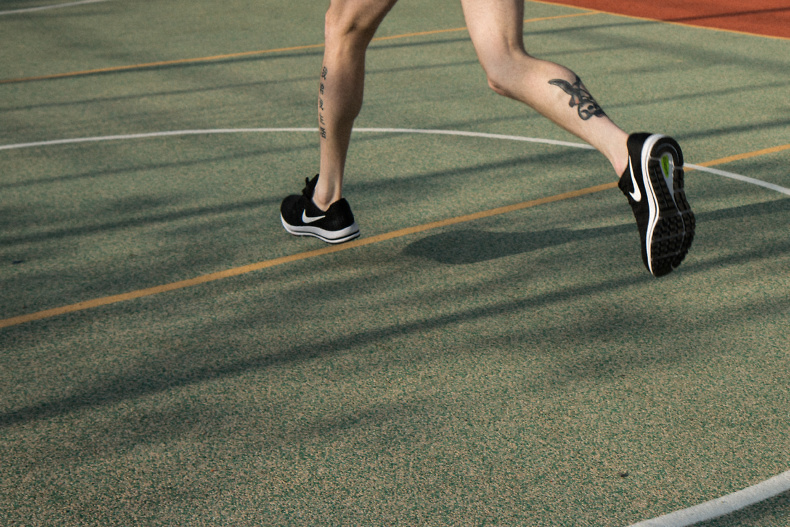
With insufficient pronation or supination, the impact force at impact acts on a smaller portion of the foot's surface, meaning a small portion of the toe does all the work. This can lead to more knee injuries. Therefore, when it comes to knee pain, the feet are often the main problem. In this case, it is worth paying special attention to the stretching of the lower legs and buying sneakers with arched soles. One example is the Asics Gel-Nimbus 19, a seamless, lightweight sneaker with foot support and a special insole for extra cushioning.
Women vs Men
Women's and men's feet are different. Women's feet are narrower and the heel is higher to protect the Achilles tendon from damage. Due to the lower body weight, women's shoes are softer than men's.
If your feet are irregular, you shouldn't worry about gender. A girl with a large foot size can be ideal for one of the men's models, while a man with a small, narrow foot, on the contrary, a women's model.
Running shoes always run a little big.
Size always makes a difference. One size bigger. Leave at least 5-10mm of space inside the sock so you can wiggle your toes at all times. Running causes the foot to flatten slightly and increase in size due to blood circulation. Suddenly the shoes are too tight and start to pinch, so that the nails burst open.
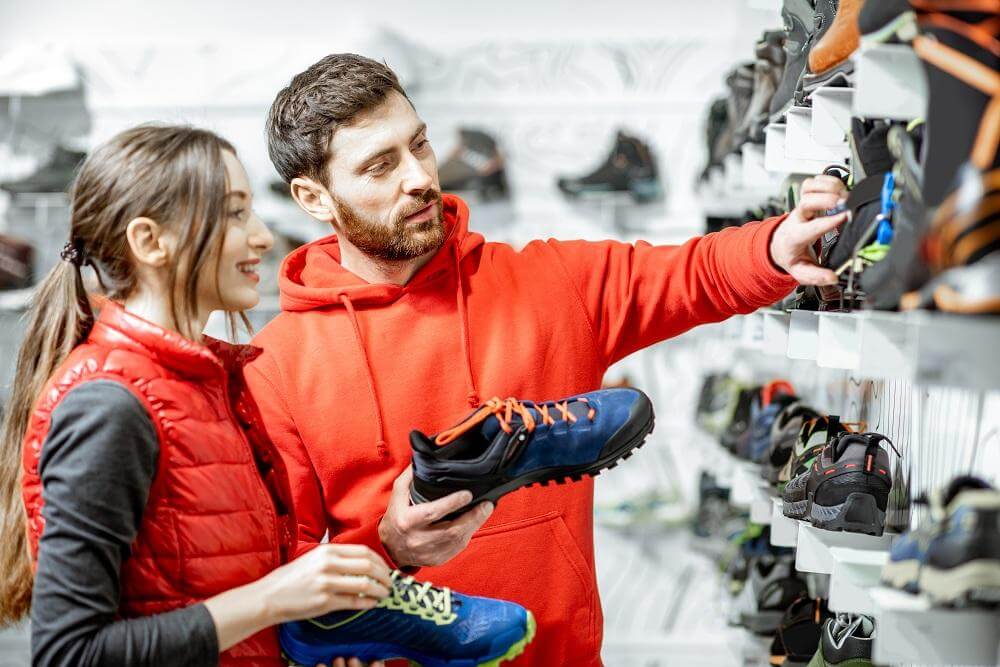
Convenience is more important! Try on several pairs. Which one is more comfortable when standing, walking, running? Check the fit and the fit on the foot, the tightness.
Read more:- How to determine the type of pronation.
- pronation.
- What is pronation and supination?.
- What is a neutral pronation?.
- pronation and supination.
- These are the pronator muscles.
- Pronation and supination in anatomy.
- Hip pronation and supination.
